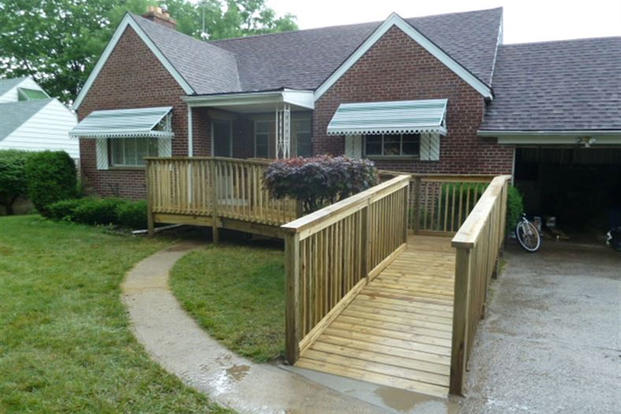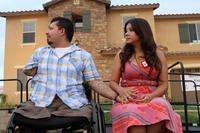For those who are eligible for the VA home loan program and also want to seek out financing for a home without needing a down payment then the VA mortgage is the choice. There really is no better option in this situation. The only other government backed mortgage is the one offered by the United States Department of Agriculture, or USDA, but that program requires the property be located in an approved area, rural in nature and there is a maximum income limit for the borrowers on the loan application. The VA loan can be used anywhere by anyone who is VA eligible. Yet the VA loan also takes this benefit a step further for those disabled veterans and can lower the monthly payments, allowing the veteran to qualify for a larger loan amount. And finally, those with a disability rating will also save money.
Step 1: Saving on the Funding Fee
The Funding Fee is a mortgage insurance policy that is expressed as a percentage of the loan amount. This fee varies based upon usage and other factors but for first time veteran home buyers this fee is 2.15% of the loan amount. This fee is not paid for out of pocket but instead rolled into the final loan amount. For instance, on a sales prices of $200,000 and a zero down VA loan, the funding fee would be $4,300 and the final loan amount would then be $204,300. Keeping the loan amount lower increases buying power. Disabled veterans are exempt from this fee.
Step 2: Are You Eligible for the VA Home Loan?
VA approved mortgage lenders must determine whether or not you’re eligible for the home loan benefit. In general, eligible borrowers include veterans of the armed forces, active duty personnel with at least 181 days of service, those with at least six years of service in the National Guard or Armed Forces Reserves and un-remarried surviving spouses of those who have died in service or as a result of a service related injury. Yet the lender can only use what is known as the Certificate of Eligibility obtained from the Department of Veteran’s Affairs. The veteran can request this certificate directly from the VA or the lender can make the request on behalf of the borrower. When the lender makes the request, the certificate is delivered electronically to the mortgage company. The fastest way to do this is digitally, as mailing the form typically gets a 4 to 6 week response time.
Step 3: Get Preapproved
You don’t need to have a copy of your certificate of eligibility prior to submitting a loan application but you do need to submit a loan application for the specific purpose of getting preapproved. Note that a preapproval is not the same as a prequalification. A prequalification is the result of a conversation with a loan officer about your current financial situation and credit history. There are many things you can do to prepare your credit for VA loan approval. A preapproval takes it a step further and actually verifies important information appearing on your credit report.
To get a preapproval, you’ll also give the lender authority to pull and review your credit report as well as request credit scores. The lender will make these requests from all three credit bureaus. The credit score will be a three digit number ranging from 300 to 850. Of these three scores, the lender uses the middle score. Most lenders require a minimum credit score of 600-620. Disabled veterans must qualify credit-wise just as any other eligible veteran.
You’ll also need to provide the lender evidence of your monthly income. This means providing copies of your disability payments covering the most recent 30 day period. Take note - disability compensation is exempt from federal income taxes so this boosts your qualifying income.
Step 4: Present Copies of Your Disability Rating
Your disability rating comes from the VA as a result of a physical exam from a physician. You can request a copy of your award letter on your own or again you can have your lender help you. It is a document listed under “Benefit Summary Percentage Letter.” Some lenders however don’t need this letter but instead use copies of your monthly disability compensation payments as proof.
Step 5a: Go Shopping
Now you’re all set and it’s time to find your perfect home. You’ve submitted the necessary documentation and now all you need is the final touch- a home. Don’t do this on your own however. You need to work with an experienced real estate agent who will represent you, find properties based upon your specifications, negotiate the final sales price and be with you at your closing.
Once you find your ideal home, you’ll make an offer and then submit a copy of your signed sales contract to the mortgage company. The lender takes over from there, orders the appraisal and processes the mortgage loan. Once fully approved, your loan papers are delivered to the settlement agent and your closing will be scheduled.
Step 5b: Specially Adapted Housing/Adaptation
Don’t be concerned that your selected property must be currently adapted to those with a disability such as widened doors to accommodate a wheel chair and lowered shelving and cabinetry. The VA can provide a grant used to make retrofits to make a home disability friendly with the Special Housing Adaptation program, or SHA. The grants can be as high as $15,462 to make these adaptions.
Or a Specially Adapted Housing (SAH) can be used to build a home, adapt an existing structure or pay off an existing mortgage on a home previously adapted that was not originally financed with a VA mortgage. These grants can be up to about $77,000. Note, these are grants, not loans and do not carry monthly payments.
It’s important that you work with a lender experienced with the VA home loan process. While VA loans are much like any other mortgage as it relates to qualifying they do have a few different characteristics that need to be addressed. Further, not only should you work with someone with VA experience but if you’re going to buy and adapt a home and take advantage of SHA and SAH grants work with a loan officer experienced in these areas as well.









